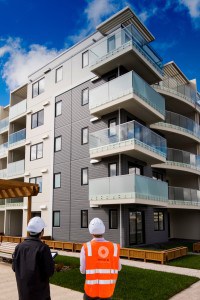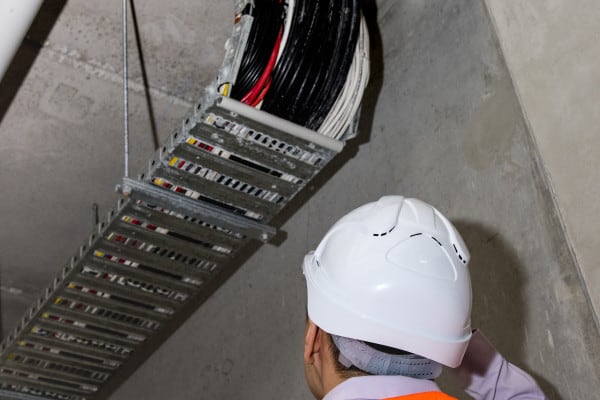The first challenge was to decide whether the building should have a  sprinkler system. An Acceptable Solution (cook book) design methodology required the building to be sprinkler protected due to the height of the building and the fact the apartments have a single escape stair. It is also possible however to design the building without sprinklers using the Verification Design method (first principles design with prescribed design inputs).
sprinkler system. An Acceptable Solution (cook book) design methodology required the building to be sprinkler protected due to the height of the building and the fact the apartments have a single escape stair. It is also possible however to design the building without sprinklers using the Verification Design method (first principles design with prescribed design inputs).
The second challenge, which this project shared with most others, was to make sure all wall penetrations and accompanying fire ratings were tidy and compliant. One of the major defects in apartment buildings over recent decades has been the fire rating of pipework, cables and ductwork where these pass through fire rated walls and floors.
When cables, pipes and ducts pass through fire rated walls and floors, the fire rating of the penetration needs to have the same rating as the wall or floor it passes through. The construction of walls and floors, as well as the material and size of the service passing through it, would be factors in meeting the passive fire safety challenge.



